Hey there foodies! Are you ready for a delightful culinary adventure that will transport your taste buds straight to Germany? Today, we’re diving into the world of German Maultaschen, a mouthwatering dish that’s rich in history and flavor. Get your aprons on, because we’re going to guide you through this traditional recipe step by step, making it easy for you to recreate this culinary masterpiece in your own kitchen. So, let’s roll up our sleeves and get cooking!
[ez-toc]
History
The history of German Maultaschen is a fascinating tale that dates back centuries. This traditional dish, often referred to as “Swabian ravioli,” originated in the Swabian region of Germany and has a story that’s as clever as it is delicious.
Legend has it that Maultaschen was created by clever monks during the 17th century. These monks were known for following strict dietary rules, especially during the period of Lent when they abstained from consuming meat. However, as the story goes, the monks couldn’t resist their cravings for meat and wanted to find a way to enjoy it without breaking their religious obligations.
To cleverly circumvent this restriction, the monks devised a brilliant plan. They created a dish that concealed the meat within pasta pockets, effectively hiding it from the eyes of God during their Lenten fast. This way, they could secretly indulge in the savory delight without violating their religious vows.
Maultaschen quickly gained popularity among the monks and the local community, becoming a favorite culinary indulgence during Lent and other special occasions. The name “Maultaschen” is said to have originated from the German word “Maul,” meaning mouth, and “Tasche,” meaning pocket or bag. Quite literally, it translates to “mouth pockets.”
Over time, Maultaschen’s popularity spread beyond the walls of monasteries, becoming a beloved dish throughout the Swabian region and eventually across Germany. Families started making Maultaschen during festive occasions, and it became a symbol of togetherness and celebration.
The original Maultaschen recipe featured a filling made with minced meat, such as pork or beef, combined with spinach, onions, breadcrumbs, and spices. As time went on, the dish evolved, and people began experimenting with different fillings and variations, creating vegetarian and vegan alternatives to cater to different dietary preferences.
Maultaschen’s significance in German culture continues to this day. It is often served during Easter and Christmas celebrations, bringing joy and nostalgia to gatherings with family and friends. In some regions of Germany, there are even Maultaschen races, where people participate in playful competitions while carrying these delightful treats.
With the advent of global travel and the sharing of culinary traditions, Maultaschen has transcended borders, gaining popularity in different parts of the world. Chefs worldwide have embraced this delightful dish, adding their unique twists and interpretations, making Maultaschen an international culinary sensation.
Today, Maultaschen stands not only as a testament to clever ingenuity but also as a symbol of German heritage and unity. It is a dish that has stood the test of time, carrying with it the flavors and memories of generations past, and continues to be cherished and savored by people all over the world.
Time
| Step | Time (Approx.) |
|---|---|
| Making the Dough | 15 minutes |
| Creating the Filling | 20 minutes |
| Assembling the Maultaschen | 30 minutes |
| Cooking Maultaschen (Boiling) | 15 minutes |
| Cooking Maultaschen (Frying) | 10 minutes |
| Total | 1 hour 30 minutes |
Please note that the time mentioned is approximate and can vary depending on individual cooking skills and familiarity with the recipe. Additionally, the preparation time may change if you decide to try different fillings or customize the recipe to your taste. Enjoy your Maultaschen cooking adventure!
Ingredients
| Ingredients | Quantity |
|---|---|
| Flour | 1 cup |
| Eggs | 2 |
| Water | 2 tablespoons |
| Pinch of Salt | To taste |
| Minced Meat (Pork/Beef) | 1/2 pound |
| Spinach (Fresh or Frozen) | 1 cup |
| Onion | 1 medium |
| Garlic | 2 cloves |
| Breadcrumbs | 1/4 cup |
| Nutmeg | A pinch |
| Salt | To taste |
| Pepper | To taste |
| Butter/Oil | 2 tablespoons |
These ingredients are for the classic meat and spinach filling, but feel free to customize the filling according to your preferences or dietary requirements. Enjoy your delicious 2-person serving of Maultaschen!
Directions
Step 1: Making the Dough
- In a large mixing bowl, combine 1 cup of flour, 2 eggs, 2 tablespoons of water, and a pinch of salt.
- Knead the mixture until it forms a smooth and elastic dough. If the dough is too sticky, add a little more flour.
- Cover the dough with a clean cloth and let it rest for about 30 minutes while you prepare the filling.
Step 2: Creating the Filling
- Heat a pan over medium heat and add a little oil or butter.
- Dice 1 medium onion and mince 2 cloves of garlic. Add them to the pan and sauté until they become translucent.
- Add 1/2 pound of minced meat (pork or beef) to the pan and cook until it browns and cooks through.
- If using fresh spinach, blanch it in boiling water for a minute, then drain and chop it. If using frozen spinach, thaw and drain it.
- In the pan with the cooked meat, add the chopped spinach, 1/4 cup of breadcrumbs, a pinch of nutmeg, salt, and pepper to taste.
- Mix all the ingredients well until they are evenly combined. Set the filling aside.
Step 3: Assembling the Maultaschen
- On a floured surface, roll out the rested dough until it’s thin but not too fragile.
- Using a pastry cutter or a glass, cut the dough into squares of equal size, about 3 to 4 inches in diameter.
- Place a spoonful of the prepared filling onto each square, being careful not to overfill.
- Fold the dough over the filling to form a triangle or rectangle shape, and press the edges firmly to seal them. Ensure there are no air pockets trapped inside.
- Optionally, you can use a fork to press the edges for a decorative touch.
Step 4: Cooking Maultaschen to Perfection
Option 1: Boiling
- Bring a large pot of salted water to a gentle boil.
- Carefully add the assembled Maultaschen to the boiling water.
- Let them simmer for about 10-15 minutes until they float to the surface.
- Use a slotted spoon to remove the cooked Maultaschen from the water and place them on a plate.
Option 2: Frying
- Heat 2 tablespoons of butter or oil in a pan over medium heat.
- Add the assembled Maultaschen to the pan and cook until they turn golden and crispy on both sides.
- Remove them from the pan and place them on a plate lined with a paper towel to absorb any excess oil.
Step 5: Serving Suggestions
- Traditionally, Maultaschen are served in a flavorful broth with chopped chives sprinkled on top.
- You can also serve them with a side of fresh salad or potato salad for a complete meal.
- Offer some tangy mustard or a creamy sauce for dipping to enhance the flavors.
Now, your delicious German Maultaschen are ready to be enjoyed! Grab a plate, take a seat, and indulge in this delectable taste of tradition. Guten Appetit!
Equipment Required
Nutrition Information
| Nutritional Information | Amount per Serving |
|---|---|
| Serving Size | 2 Maultaschen |
| Calories | 350 calories |
| Total Fat | 15g |
| – Saturated Fat | 6g |
| – Trans Fat | 0g |
| Cholesterol | 100mg |
| Sodium | 580mg |
| Total Carbohydrates | 35g |
| – Dietary Fiber | 2g |
| – Sugars | 2g |
| Protein | 18g |
| Vitamin D | 2mcg (10% DV) |
| Calcium | 60mg (6% DV) |
| Iron | 3mg (15% DV) |
| Potassium | 280mg (8% DV) |
Please note that the nutrition information provided is approximate and can vary based on specific ingredients and serving sizes. It’s always a good idea to check the nutrition labels of the individual ingredients you use to get the most accurate values for your meal. Enjoy your tasty and nutritious Maultaschen!
Tips
- Perfecting the Dough: When making the dough, aim for a smooth and elastic consistency. If the dough is too sticky, add a little more flour as needed while kneading. Resting the dough is essential to ensure it rolls out easily and holds its shape when assembling.
- Prep Time-Saver: If you’re short on time, consider using store-bought pasta dough or wonton wrappers instead of making the dough from scratch. This will speed up the preparation process without compromising the taste.
- Even Filling Distribution: When assembling the Maultaschen, make sure to place an equal amount of filling on each dough square. Overfilling can lead to difficulty sealing the edges, and underfilling may leave the Maultaschen feeling empty.
- Sealing the Edges: Properly sealing the edges of the Maultaschen is crucial to prevent the filling from spilling out during cooking. Ensure there are no gaps or air pockets by pressing the edges firmly together.
- Folding Techniques: There are various folding techniques you can use to create different shapes of Maultaschen. Experiment with triangular, rectangular, or even circular folds for a unique presentation.
- Freezing for Later: Maultaschen freeze well, making them a convenient meal option. After assembling, place the Maultaschen on a baking sheet and freeze them individually before transferring them to a container or a ziplock bag. When ready to cook, you can directly boil or fry them from frozen.
- Vegetarian and Vegan Options: Feel free to get creative with the filling! For a vegetarian version, replace the meat with sautéed mushrooms, tofu, or a mix of vegetables. For a vegan twist, use plant-based minced meat alternatives and skip the eggs in the dough (replace with water).
- Customize the Herbs and Spices: While the classic filling calls for nutmeg, you can experiment with other herbs and spices to suit your taste. Consider adding fresh herbs like parsley, thyme, or basil for an aromatic twist.
- Boiling vs. Frying: Both boiling and frying are delicious cooking methods, each providing a different texture. Boiling creates a soft and tender Maultaschen, while frying adds a delightful crunch. Try both methods to discover your favorite!
- Serving Sauces: Apart from traditional broth, you can serve Maultaschen with various sauces, such as tomato sauce, creamy garlic sauce, or a tangy mustard dip. Be adventurous and explore different flavor combinations!
Pros & Cons
| Pros | Cons |
|---|---|
| ✅ Delicious German delicacy | ❌ Time-consuming preparation |
| ✅ Versatile fillings for dietary preferences | ❌ Requires some cooking skills |
| ✅ Great for special occasions and gatherings | ❌ High in calories and fat |
| ✅ Freezes well for future meals | ❌ Some may find the folding challenging |
| ✅ Symbol of tradition and cultural significance | ❌ May not be suitable for gluten-sensitive individuals |
Conclusion
In conclusion, German Maultaschen is a delightful culinary treasure that brings together the rich flavors of tradition and the joy of togetherness. Its clever origins as “Swabian ravioli” crafted by inventive monks during Lent add a touch of intrigue to this timeless dish.
The recipe’s versatility allows for endless possibilities, from classic meat and spinach fillings to creative vegetarian and vegan variations. Whether you choose to boil or fry, the tender and crispy textures will surely please your palate.
Making Maultaschen may require a bit of time and effort, but the result is well worth it. As you gather your loved ones in the kitchen, the preparation becomes a heartwarming experience, filled with laughter and storytelling. The joy of sharing this culinary masterpiece during festive occasions or cozy family gatherings enhances the sense of connection and tradition.
So, if you’re ready to embark on a flavorsome adventure that carries the essence of German culture and creativity, don your aprons and give this cherished recipe a try. The rewards of savoring your own homemade Maultaschen, bursting with a harmonious blend of flavors, are immeasurable.
Get ready to impress your taste buds and create lasting memories as you master the art of crafting Maultaschen. Whether you’re a seasoned cook or a beginner, the experience of bringing this cultural gem to life is bound to be a gratifying and satisfying endeavor.
Embrace the joy of cooking, the magic of tradition, and the culinary wonder that is German Maultaschen. Guten Appetit!
Facts
- Fact 1: A Sneaky Name with a Witty Meaning
- Did you know that Maultaschen is sometimes playfully referred to as “Herrgottsbescheißerle” in the Swabian region of Germany? 🤫 This quirky nickname translates to “little God-cheaters.” It’s a nod to the clever monks who invented the dish to secretly enjoy meat during Lent while hiding it from the eyes of God. Who knew Maultaschen had such a mischievous side?
- Fact 2: Maultaschen Races – Foodies on the Run! 🏃
- In some regions of Germany, Maultaschen isn’t just a dish; it’s a playful sport! 🏁 People participate in “Maultaschenrennen,” which are races where contestants run while carrying Maultaschen in their hands. It’s a hilarious and delightful sight as foodies dash to the finish line, making this German gem even more fun-loving and unique.
- Fact 3: The “Swabian Secret” within the Pasta Pockets
- The original Maultaschen recipe was created by monks to enjoy meat during Lent secretly. But what’s the Swabian secret hidden within those pasta pockets? 🤔 Legend has it that the original recipe also included a mixture of chopped vegetables or even leftover meat scraps, making Maultaschen not only clever but also resourceful.
- Fact 4: Maultaschen Around the World 🌍
- While Maultaschen originated in Germany, its charm has traveled far beyond its borders, inspiring culinary creations worldwide. 🌟 Chefs from different cultures have put their spin on the dish, experimenting with various fillings and cooking techniques. Maultaschen’s global appeal has transformed it from a regional delicacy to a beloved international sensation.
- Fact 5: Maultaschen in Space – A Heavenly Treat? 🚀
- Believe it or not, Maultaschen’s reputation is out of this world – quite literally! 🪐 In 2007, German astronaut Hans Schlegel took a special package of Maultaschen on board the Space Shuttle Atlantis during the STS-122 mission. Although we can’t say if they were as delicious in space, it’s a testament to the dish’s enduring popularity and universal appeal. Who knows, maybe Maultaschen will one day become the astronauts’ favorite cosmic comfort food!
FAQ’s
Can I freeze Maultaschen for later?
Absolutely! Once assembled, you can freeze Maultaschen on a baking sheet before transferring them to a container or a ziplock bag. When you’re ready to enjoy them, simply cook them from frozen, adding a few extra minutes to the cooking time.
What wine pairs well with Maultaschen?
For a classic pairing, opt for a light to medium-bodied red wine, such as a Pinot Noir or a Spätburgunder from Germany. If you prefer white wine, a dry Riesling or a Grauburgunder will complement the flavors of Maultaschen beautifully.
Are there any gluten-free options for the dough?
Yes! You can use gluten-free flour blends to make the dough, ensuring that those with gluten sensitivities can also enjoy this delightful dish.
Can I use a different filling for Maultaschen?
Definitely! Maultaschen is incredibly versatile, and you can experiment with fillings that suit your taste. Try a vegetarian version with cheese and spinach or a seafood-filled Maultaschen for a delightful twist.
How long does it take to make Maultaschen from start to finish?
The time required depends on your familiarity with the recipe and the filling you choose. On average, it takes about 2 to 2.5 hours to prepare Maultaschen from scratch, including dough preparation, filling, and assembly. But remember, good food takes time and effort, and the end result is always worth it!
Can I use store-bought pasta dough instead of making it from scratch?
Absolutely! Using store-bought pasta dough or wonton wrappers can save you time and effort while still delivering delicious results.
Can I prepare the filling in advance and assemble later?
Yes, you can! Prepare the filling ahead of time and store it in the refrigerator until you’re ready to assemble the Maultaschen. This can be especially helpful if you want to plan a stress-free cooking session.
Can I make a larger batch of Maultaschen and store leftovers?
Of course! You can double or triple the recipe to make a larger batch. Leftover Maultaschen can be refrigerated for a day or two or frozen for future meals.
What’s the best way to reheat leftover Maultaschen?
To reheat, gently simmer boiled Maultaschen in a flavorful broth until heated through. For fried Maultaschen, place them in the oven at a low temperature to maintain their crispiness.
Can I serve Maultaschen with other side dishes besides a broth?
Absolutely! Maultaschen pairs well with a variety of side dishes. Serve them with a fresh salad, potato salad, or roasted vegetables to create a well-rounded and satisfying meal.




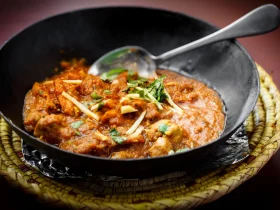

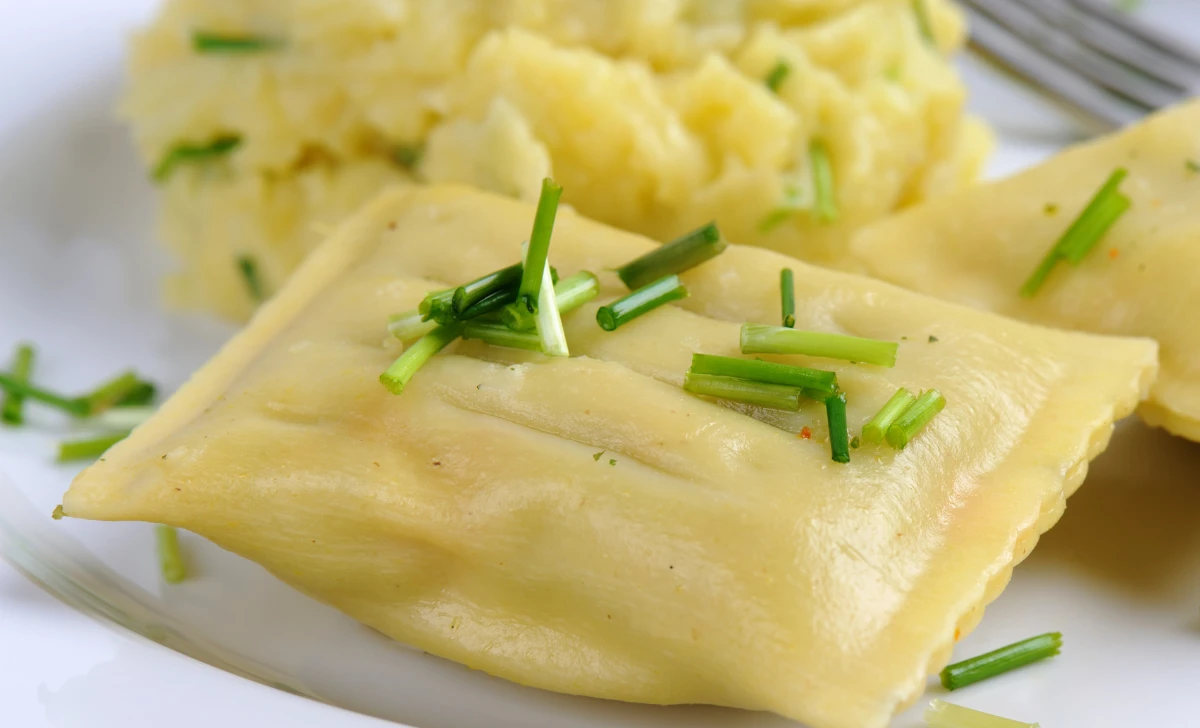

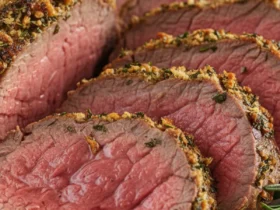
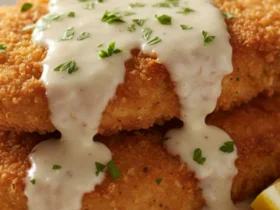
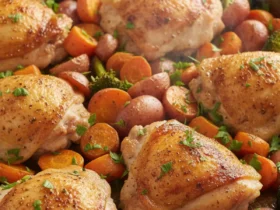
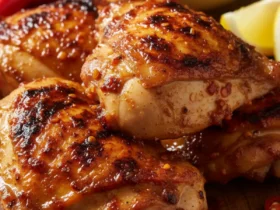
Leave a Review